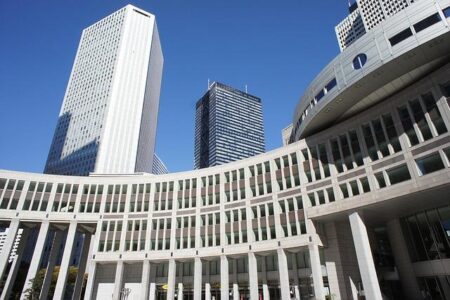Understanding Texas’ Flash Flood Alley: Causes, Consequences, and Solutions
How Flash Flood Alley Threatens Texas Communities
Texas’ infamous Flash Flood Alley, spanning from Central Texas northeastward, is recognized as one of the most flood-vulnerable corridors in North America. This region’s combination of flat landscapes, rapidly forming thunderstorms, and dense urbanization creates a perfect storm for sudden, intense flash floods. These events often overwhelm local infrastructure, leading to widespread property damage, disruption of daily activities, and complicated evacuation efforts. The situation is exacerbated by outdated drainage systems that are ill-equipped to handle the massive influx of stormwater during heavy rainfall.
Primary challenges faced by communities in Flash Flood Alley include:
- Loss of natural floodplains due to rapid urban expansion
- Insufficient stormwater drainage capacity
- Low levels of public flood awareness and preparedness
- Socioeconomic barriers limiting access to mitigation resources
Local authorities have responded by prioritizing infrastructure upgrades and public education programs. The table below summarizes key impacts from recent flood events alongside community-driven responses:
| Impact Indicator | 2019 Flood Event | 2022 Flood Event | Community Measures |
|---|---|---|---|
| Residential Properties Affected | 2,500 | 3,100 | Establishment of emergency shelters |
| Hours of Transportation Disruption | 18 | 24 | Implementation of advanced flood alert systems |
| Economic Damages (in millions USD) | 120 | 180 | Funding programs for elevating homes |
Underlying Causes of Frequent Flooding in Texas’ Flash Flood Alley
Flash Flood Alley’s susceptibility to rapid flooding is rooted in a blend of geographic, climatic, and human factors. The region’s terrain features low-lying basins and rugged hill country that channel heavy rainfall into confined waterways, intensifying flood risks. Meteorologically, the area is a hotspot for severe thunderstorms, often triggered by the collision of warm, moisture-laden air from the Gulf of Mexico with drier air masses from the west. These conditions frequently produce intense downpours over brief intervals.
Urban sprawl further aggravates flooding by replacing permeable soil with concrete and asphalt, which accelerates runoff and overwhelms drainage systems. Many existing stormwater infrastructures are outdated or undersized, limiting their effectiveness during extreme weather. Key contributors to the flood risk include:
- Geographical Layout: Steep slopes and narrow valleys concentrate water flow.
- Severe Weather Events: Recurring intense storms and tropical moisture influxes.
- Urban Expansion: Increased impermeable surfaces reduce natural water infiltration.
- Drainage Deficiencies: Aging systems unable to cope with heavy rainfall volumes.
| Factor | Effect on Flooding |
|---|---|
| Topography | Channels runoff into flood-prone areas |
| Weather Patterns | Causes sudden, heavy rainfall |
| Urban Development | Limits natural water absorption |
| Stormwater Infrastructure | Insufficient capacity during storms |
Innovative Flood Warning Systems and Preparedness Strategies
In response to the persistent threat of flash floods, Texas communities have embraced advanced technologies to enhance early warning capabilities. Modern flood alert systems utilize real-time data from radar, river gauges, and satellites, combined with AI-driven predictive models, to deliver precise and timely flood forecasts. These systems integrate with mobile devices to send geo-targeted alerts, ensuring residents in high-risk zones receive customized safety instructions promptly. This technological leap has significantly improved evacuation efficiency and reduced flood-related casualties.
Emergency preparedness programs have also evolved, focusing on community involvement and infrastructure fortification. Authorities conduct regular evacuation drills, distribute educational materials on flood safety, and promote flood insurance awareness. Infrastructure improvements, such as raised roadways and upgraded drainage networks, complement these efforts by reducing flood damage. The table below highlights key tools currently deployed in vulnerable districts:
| Tool | Function | Effectiveness |
|---|---|---|
| Automated Flood Sirens | Immediate community alerts | High |
| Mobile Flood Alert Apps | Personalized notifications | Very High |
| Community Evacuation Exercises | Preparedness training | Moderate |
| Flood-Resilient Infrastructure | Damage reduction | High |
Strategic Infrastructure Investments for Long-Term Flood Risk Reduction
Combating the chronic flooding challenges in Texas demands sustainable infrastructure solutions designed to endure increasingly volatile weather patterns. Key initiatives include upgrading stormwater management through the construction of reinforced levees, expanded retention basins, and enhanced drainage systems. These measures not only divert excess water from urban centers but also support groundwater replenishment. Complementing these are green infrastructure projects—such as permeable pavements, bioswales, and restored wetlands—that absorb stormwater and alleviate pressure on conventional drainage.
Moreover, the deployment of IoT sensors and real-time monitoring technologies enables continuous assessment of water levels and infrastructure health, facilitating proactive flood management. The following table outlines major infrastructure projects, their benefits, and projected impacts on flood mitigation within Flash Flood Alley:
| Project | Primary Benefit | Projected Impact |
|---|---|---|
| Levee Strengthening | Improved flood defense | Reduces urban flood risk by 35% |
| Retention Basin Expansion | Temporary stormwater storage | Delays peak runoff by 40% |
| Green Infrastructure Implementation | Enhanced stormwater absorption | Decreases surface runoff by 25% |
| IoT-Based Flood Sensors | Real-time flood detection | Provides up to 2-hour early warnings |
Conclusion: Building Resilience Against Flash Floods in Texas
As Texas’ Flash Flood Alley continues to face escalating flood risks, a comprehensive understanding of the region’s unique environmental and urban factors is essential. With climate change intensifying extreme weather events, the urgency for enhanced preparedness, innovative technology adoption, and resilient infrastructure investment has never been greater. Collaborative efforts among residents, policymakers, and emergency services are vital to safeguarding lives and property in one of North America’s most flood-prone areas.







